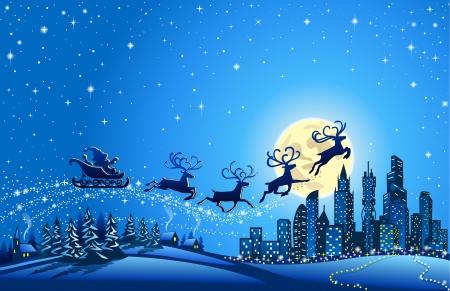“Yes, Virginia…”

22486445 – santa sleigh closer to the big city
December 12, 2016
Inspired by a man named St. Nicholas in 280 AD, the legend of Santa Claus was born. This legend has been added to over many centuries and influences the holiday celebrations of many American families today. Even in a world of emerging technological advances and increased knowledge of physics, etc., the tale of Santa Claus and his flying reindeer has survived the Scrooges and 6-year-old skeptics of today.
In 2011, according to a poll by CBS News, three-fourths of non-Christian adult Americans claim that they believed in Santa when they were children. Half of these adults still believe that St. Nick is important to their current holiday celebrations.
Even though 83 percent of Americans identify as Christian, according to an ABC News poll, the fact that the majority of non-Christian individuals have incorporated the tale of Santa Claus into their own holiday celebrations demonstrates the impact this legend has had on American society.
Modern society has adopted and commercialized the tale of Santa Claus. Movies depicting stories of Santa and his elves appear on almost every television channel during the holiday season. Children line up to see “Santa Claus” at every mall across the United States.
Western companies and brands use flying deer, elves, and sometimes even Mr. and Mrs. Claus in their commercials to sell their products. For example, just recently the M&M company showed Santa Claus communicating with their chocolate characters. The advertisement industry is using this tale not only to publicize their products, but also to connect with American families emotionally by recognizing this beloved legend and its impact on so many children’s lives.
The story of St. Nick has greatly impacted the lives of many Americans, no matter what religion they practice or what they believe. Classic childhood films, books, parades, mall gatherings and more all reflect the impact the tale of Santa Claus has on our society today. The fact that this tale has survived thousands of years illustrates both the power of this story and the power of children’s belief in magic.

